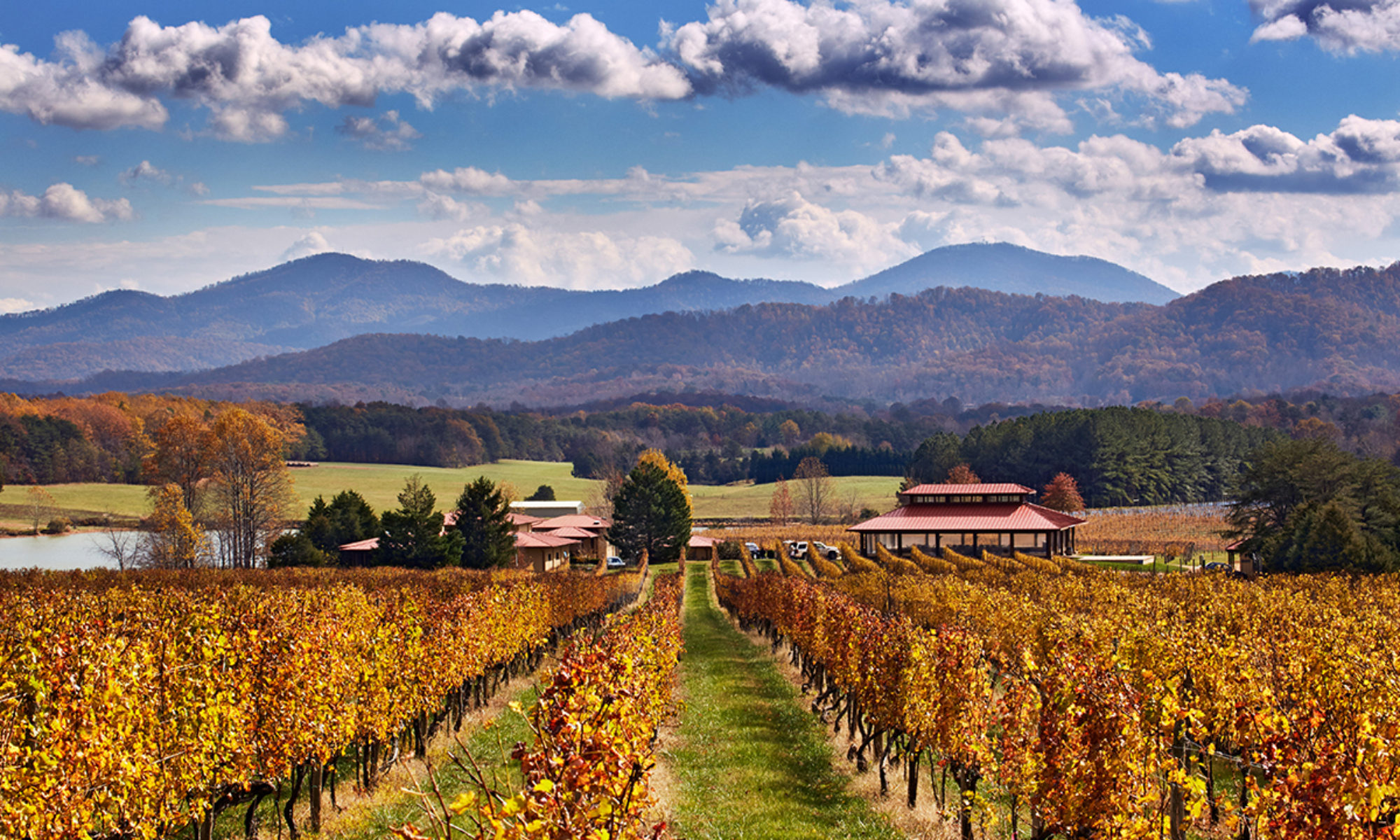Located on West River road in Scottsville, on a hilltop above the Hardware River south of Charlottesville in Fluvanna County. George and Leslie Cushnie planted the acre of vines at family-owned Thistle Gate in 2008 after moving here from Fairfax County. The Winery opened in 2012. Leslie tends the vineyard and George makes the wines. As of early 2023, the winery had been sold and (hopefully temporarily) closed.
Wine. Tier II. Thistle Gate is a small estate, with production around 1,000 cases a year, but a wide range of wines for tasting. Thistle Gate’s Petit Verdot was awarded a Gold Medal at the 2018 Virginia Governor’s Cup, the state-wide wine tasting competition. Their Seyval Blanc was awarded a Bronze Medal at the 2019 competition. One of their main plantings is Chambourcin, which is produced in several wine styles, including rosé, sweet and traditional. The Thistle Red is a blend of Merlot and Petit Verdot.
Setting. Cozy farm-style winery, with the vineyard overlooking a river. Outdoors there is a wide wrap-around wood veranda with tables, teak chairs on the lawn, a Gazebo and a barrel fountain. Indoors there are traditional Windsor chairs painted grey-blue to match the paneled bar. Cheese and charcuterie available. Thistle Gate occasionally hosts painters’ receptions.
Stories. The great 1969 Hurricane. Hurricanes seem to be coming more and more frequently, and to be getting stronger with climate change. Yet some of the greatest damage in Virginia from a hurricane goes back to 1969, when Hurricane Camille’s 174 mph winds made it the second most intense Atlantic tropical system on record. Camille came ashore as a Category 5 storm in Mississippi on August 17, 1969. On August 19, slowing down and waterlogged after having flattened almost everything along the Mississippi coast, and Camille dumped an estimated 27 inches of water in Nelson County south of Charlottesville, in 12 hours. Birds were reported drowned in the trees, and cows floated downriver. The James River rose and rose; at its northernmost point, in Scottsville, it encounters Mink Creek, and this has been the site of some of the most imposing floods in recorded Virginia history. On August 20, the James overflowed its banks into Scottsville downtown. Scottsville residents were being evacuated from the second story of their homes, and cars, furniture, fences, and sodden merchandise bobbed about Main and Valley Streets. This was the 20th flood of 20 feet or more experienced by the town since 1870, and the worst of them all. Camille went on to leave a trail of 259 dead and damages on the order of $10 billion in today’s dollars. Half of those deaths were here in Nelson County, Virginia – nearly 1% of the county’s then-population. Three years later, in June 1972, Hurricane Agnes came along and again the James River rose to record levels, abetted the cutting of timber upstream. The renewed flooding in Scottsville was bad enough that there was talk of abandoning the town altogether – the kind of debate shoreline communities are starting to face more frequently. However, Scottsville Mayor Raymond Thacker found funding to build a dam on Mink Creek, and a levee to hold back flood waters. The town survived, and now is a winemaking host. A Historical Marker on Main Street memorializes the great hurricane and its damages to Nelson County. Hopefully Virginia will not see its like again.

